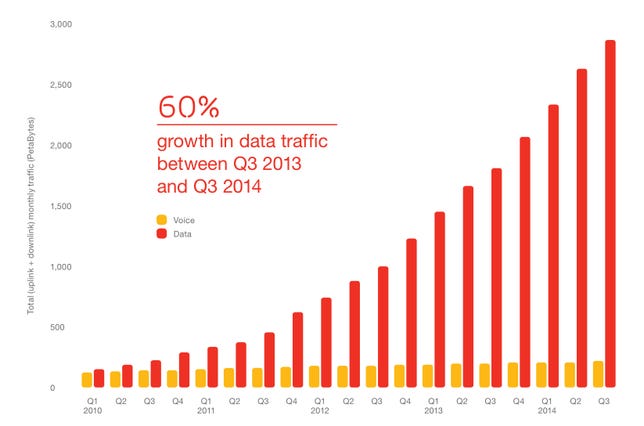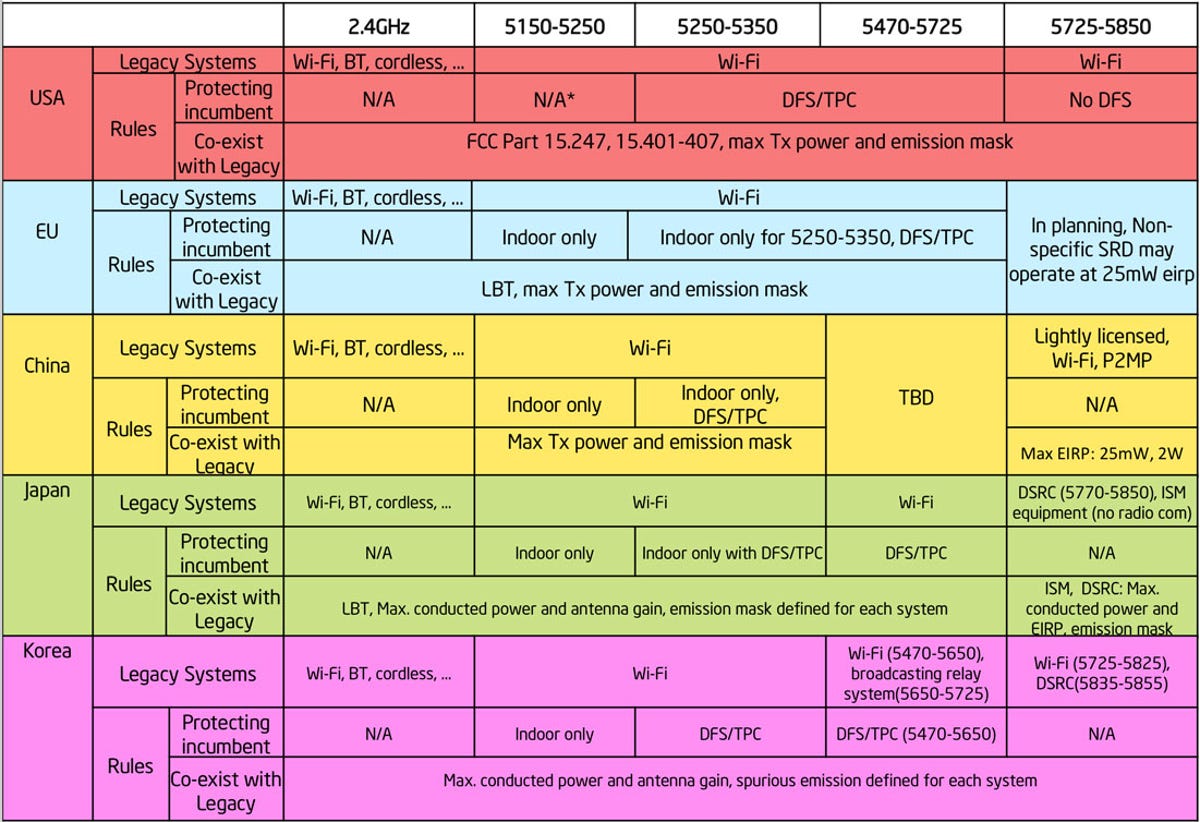
Ericsson
Ericsson expects that 4G smartphones will be able to download data three times faster later this year with a little help from wireless spectrum usually used by Wi-Fi, the company announced Monday.
The Finnish firm sells network equipment to companies like Verizon and Vodafone that operate mobile networks. Those networks currently use the 4G (fourth-generation) technology known as LTE (Long-Term Evolution) that lets phones connect to the Internet and make phone calls. LTE today typically uses radio waves sent over frequencies that carriers license from the government at great expense. But later in 2015, Ericsson will expand LTE so it can send data over unlicensed spectrum open for anybody’s use. Specifically, it will use the 5GHz frequency band also used by today’s Wi-Fi network technology.
“It gives operators the opportunity to improve coverage in indoor areas and to bring better speed and better performance,” said Håkan Andersson, head of Ericsson’s 5G product strategy in its radio business unit. “This is the first step on a 4.5G-type system [and] part of the journey to 5G.”
The term 4.5G refers to improvements to today’s fourth-generation networks, and 5G refers to the fifth-generation wireless network technology that should dramatically boost network speed and other performance characteristics starting as early as 2020.
Finding ways to boost network capacity is crucial. People use their smartphones more and more, and they use them for data-hungry services like watching movies and chatting over video. But people aren’t happy when carriers’ networks can’t keep up with demand. Worldwide, mobile device users currently consume 3.2 exabytes of data per month. That figure is growing at 40 percent per year and should increase by a factor of eight by 2020, according to Ericsson’s Mobility Report.
The speed-boost technology will be added to Ericsson’s network equipment designed for indoor use in areas like offices, airports and malls, the company said in conjunction with this week’s Consumer Electronics Show 2015 in Las Vegas. “We will have it in products by the end of 2015,” Andersson said, including the RBS 6402 Indoor Picocell.
Today’s LTE technology has a feature called carrier aggregation that can transmit data on several frequencies simultaneously. Carrier aggregation uses lower frequencies today that are licensed, but expanding to 5GHz should make way for more signals. Using this open frequency band is a technology called License Assisted Access (LAA), sometimes called LTE-U, with U standing for unlicensed.
“We are combining the possibility to do carrier aggregation by carrier-licensed spectrum with unlicensed spectrum to drive higher data rates,” Andersson said. Adding one channel doubles LTE peak download speeds from 150Mbps (megabits per second) to 300Mbps; adding two channels triples it to 450Mbps.


Intel
Using 5GHz spectrum isn’t a free lunch, though. For one thing, there can be more interference with other devices like Wi-Fi networks. For another, radio waves at these higher frequencies don’t travel as far as typical LTE signals that use lower frequencies — and regulations typically place limits on transmission power that further reduce range. It’s therefore no surprise that Ericsson is concentrating on indoor use rather than on large-scale “macrocells” base stations that blanket cities and suburbs with radio signals.
Another wrinkle: using LAA hurts performance of 5GHz Wi-Fi networks, according to Intel research (PDF). In other words, LAA could could make life harder for homes and businesses that use traditional Wi-Fi, although there are ways of encouraging peaceful coexistence.
Because the unlicensed spectrum doesn’t perform as reliably as the licensed spectrum, LAA uses the 5GHz band as a boost. Important data is sent over the licensed spectrum, and the unlicensed 5GHz band adds capacity where it’s available, Andersson said.
Qualcomm agrees. “The benefits of licensed spectrum cannot be matched by unlicensed spectrum,” Lorenzo Casaccia, senior director for technical standards, said in a June presentation (PDF). “Unlicensed spectrum is a complement to licensed spectrum.”
To try to cope with fast-growing data demands, carriers have been augmenting wireless networks with Wi-Fi, too. LAA, though, makes more efficient use of 5GHz spectrum, squeezing 60 percent more data over the network than Wi-Fi, according to a test by Japanese carrier NTT Docomo and network equipment maker Huawei. Samsung was even more optimistic, measuring a 70 percent boost (PDF).
License Assisted Access isn’t a technology unique to Ericsson. It’s part of the LTE standard that the wireless industry collectively defines — specifically, the thirteenth update to the standard.



